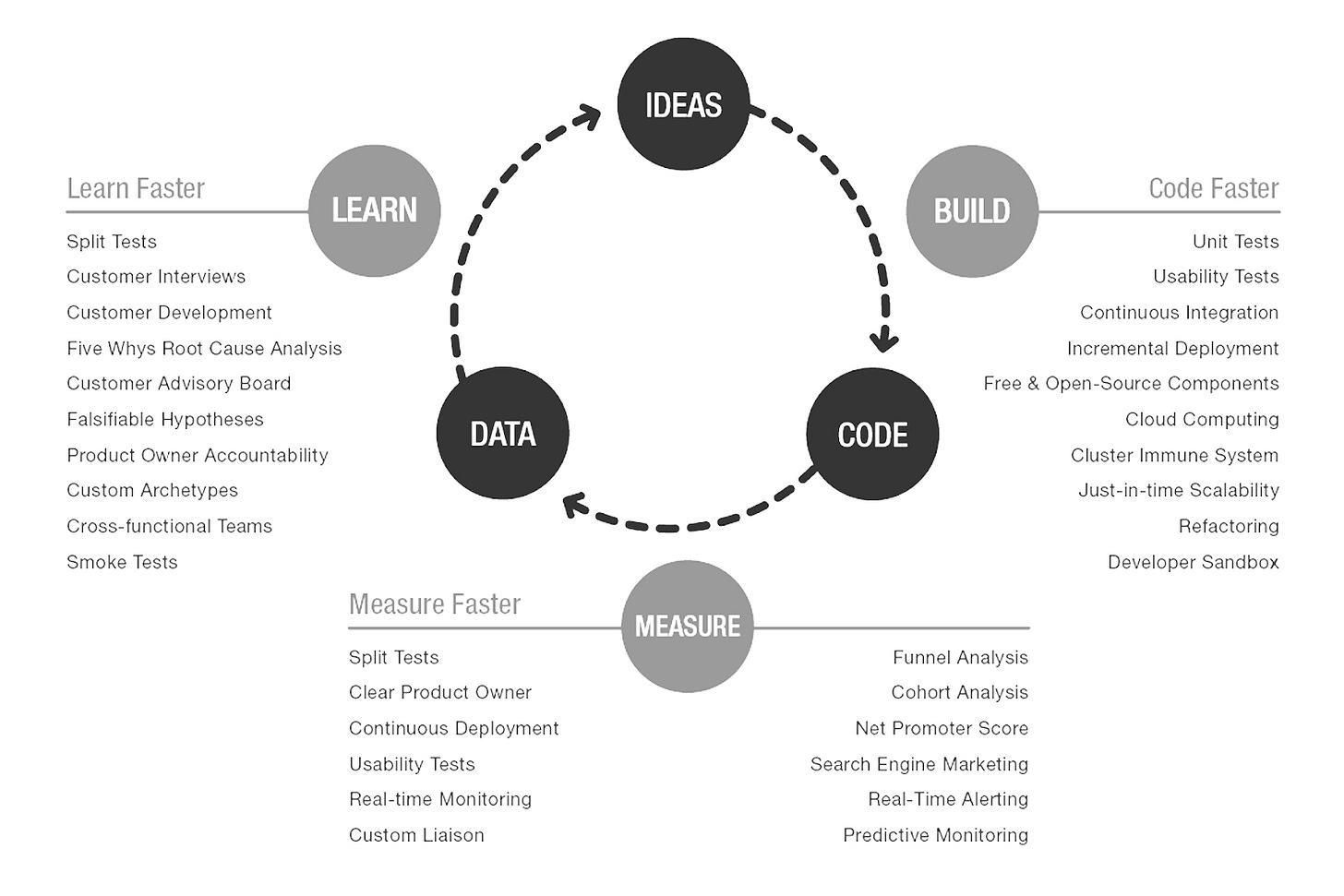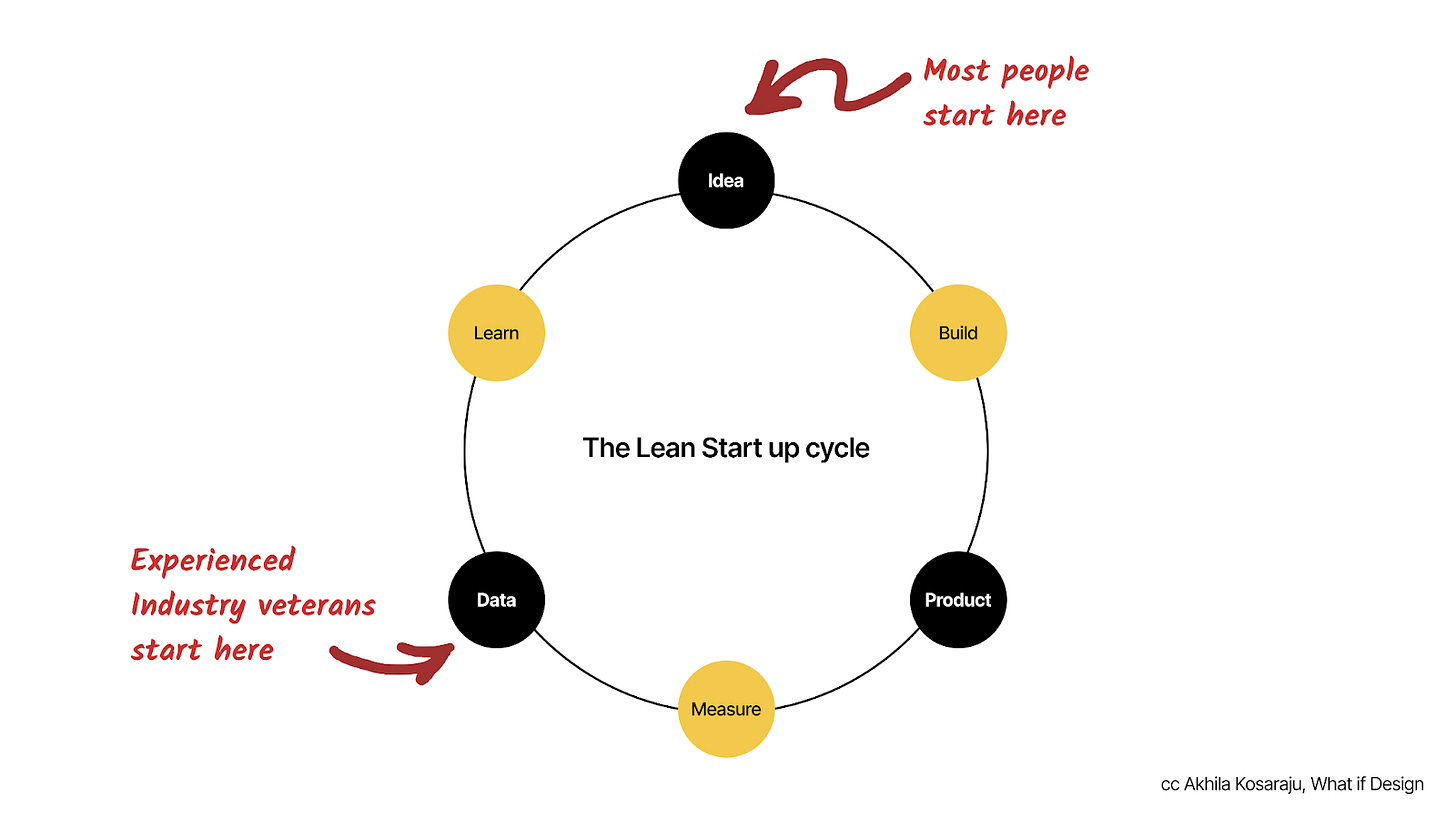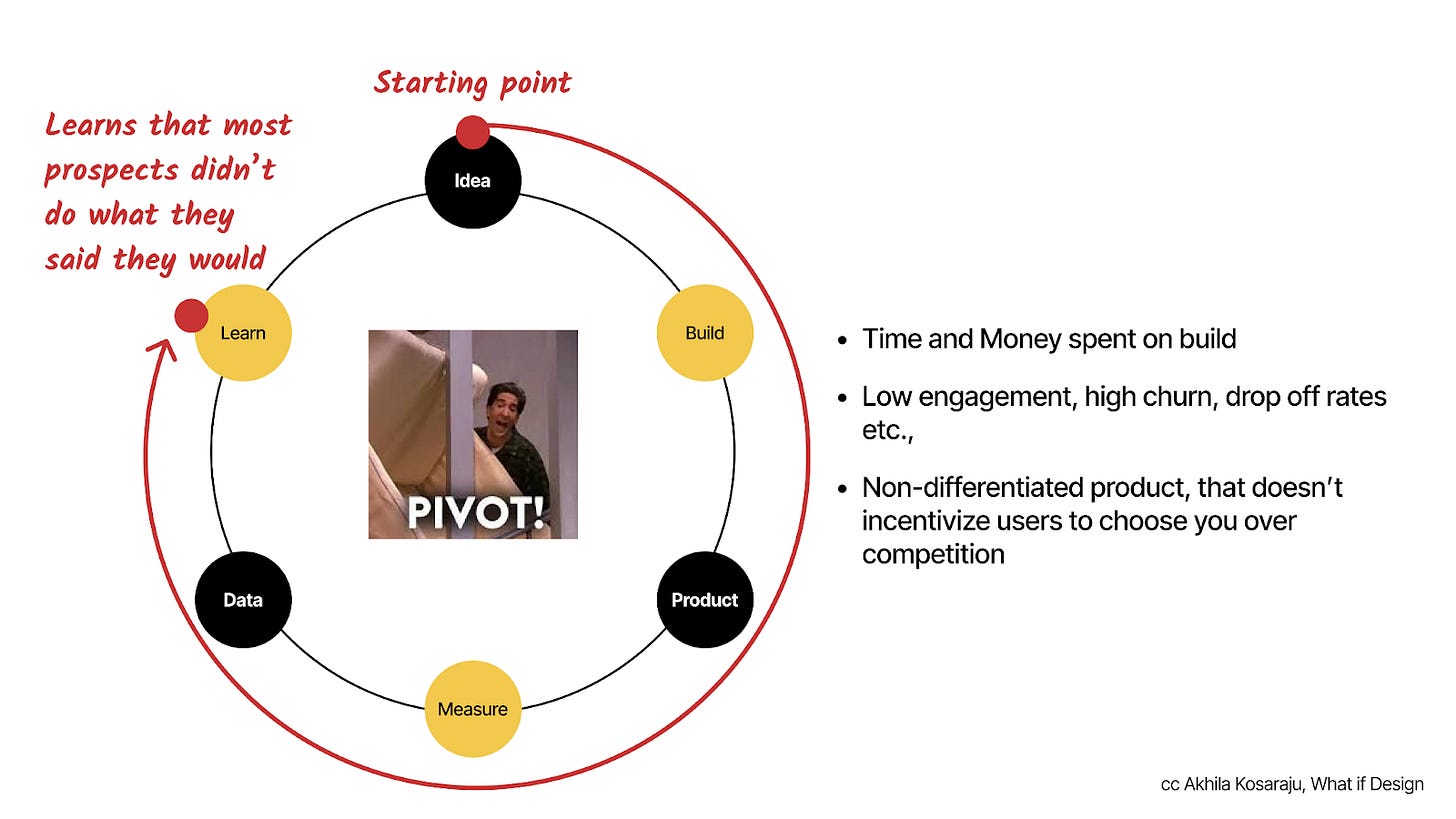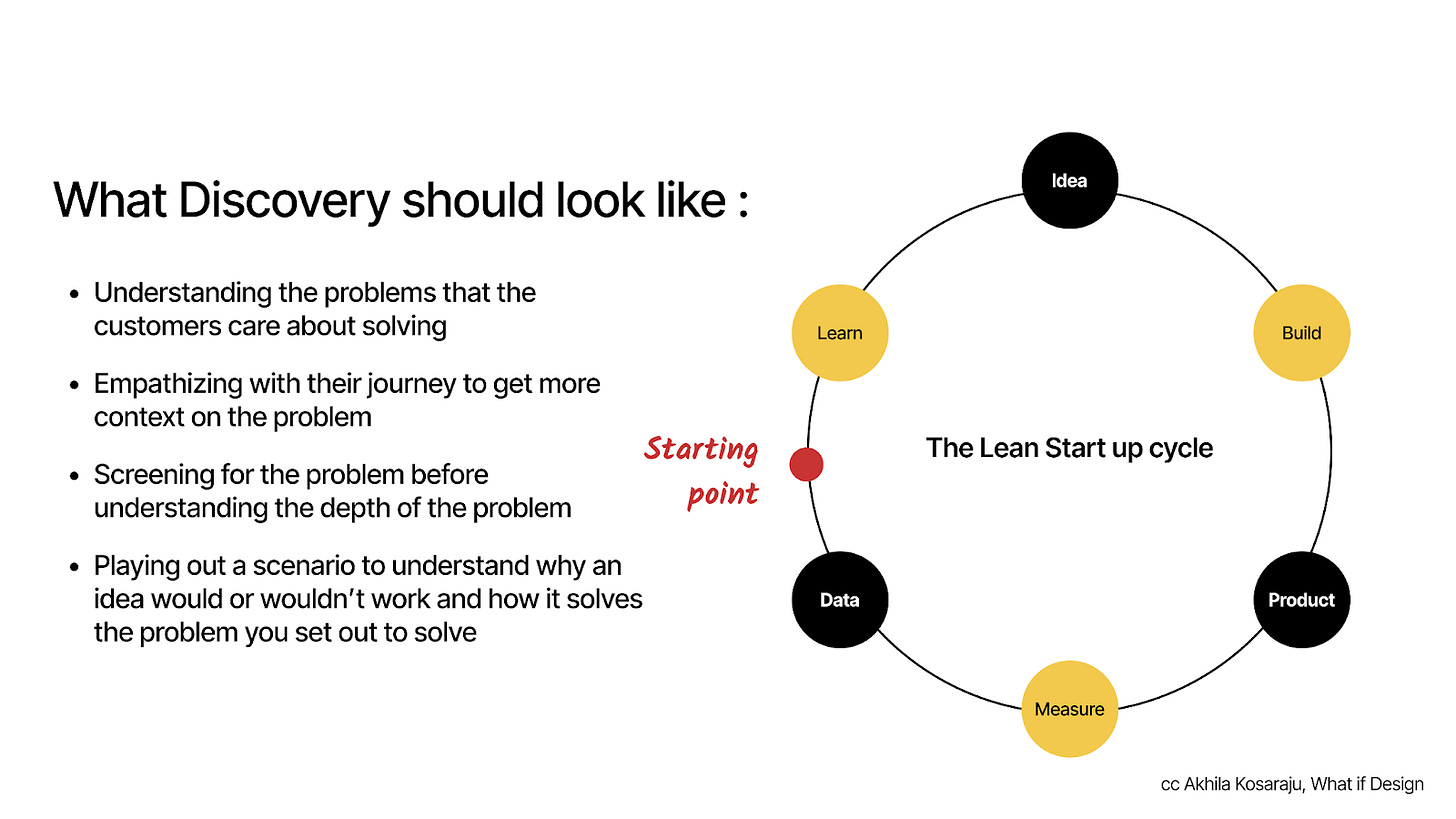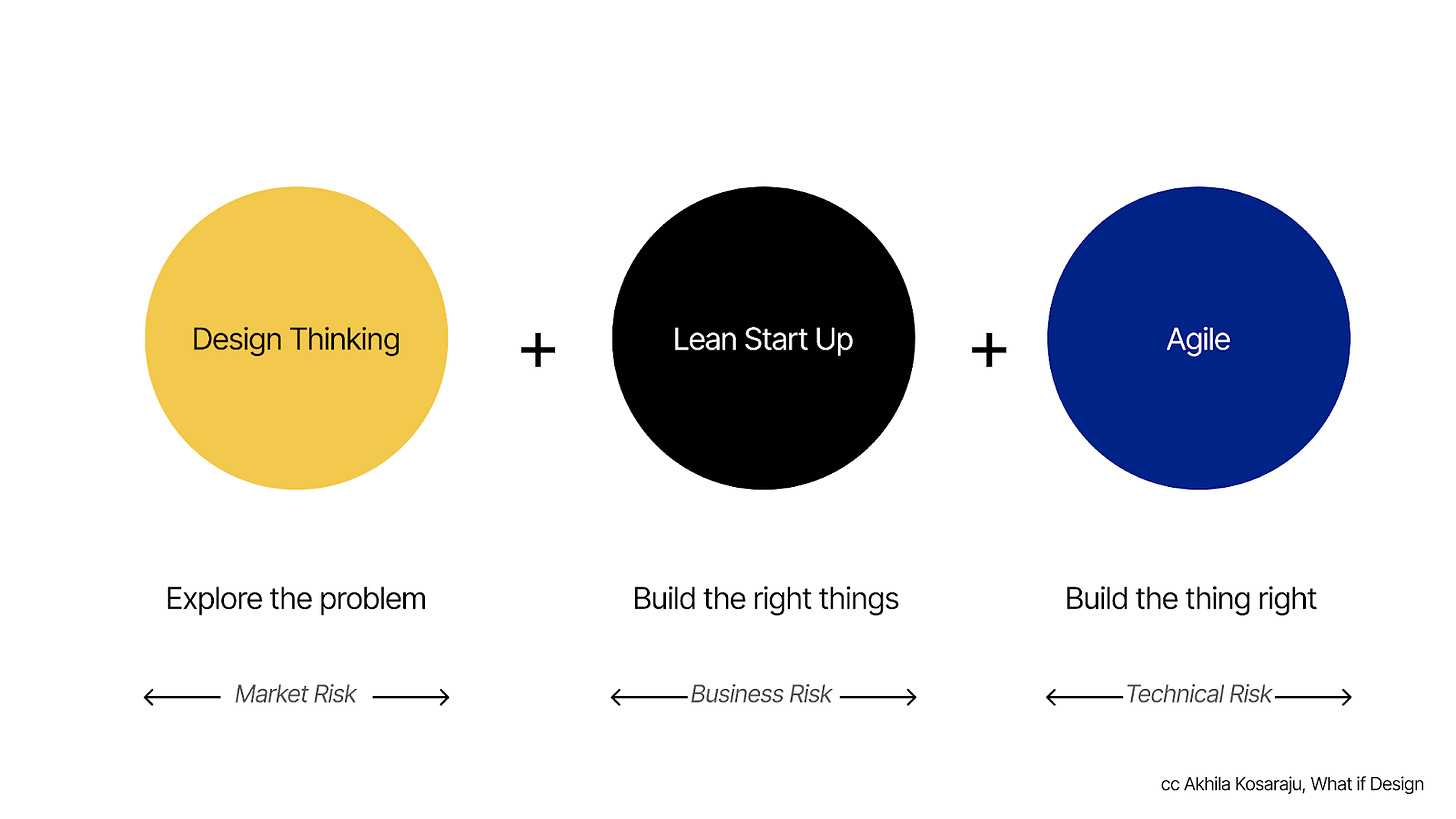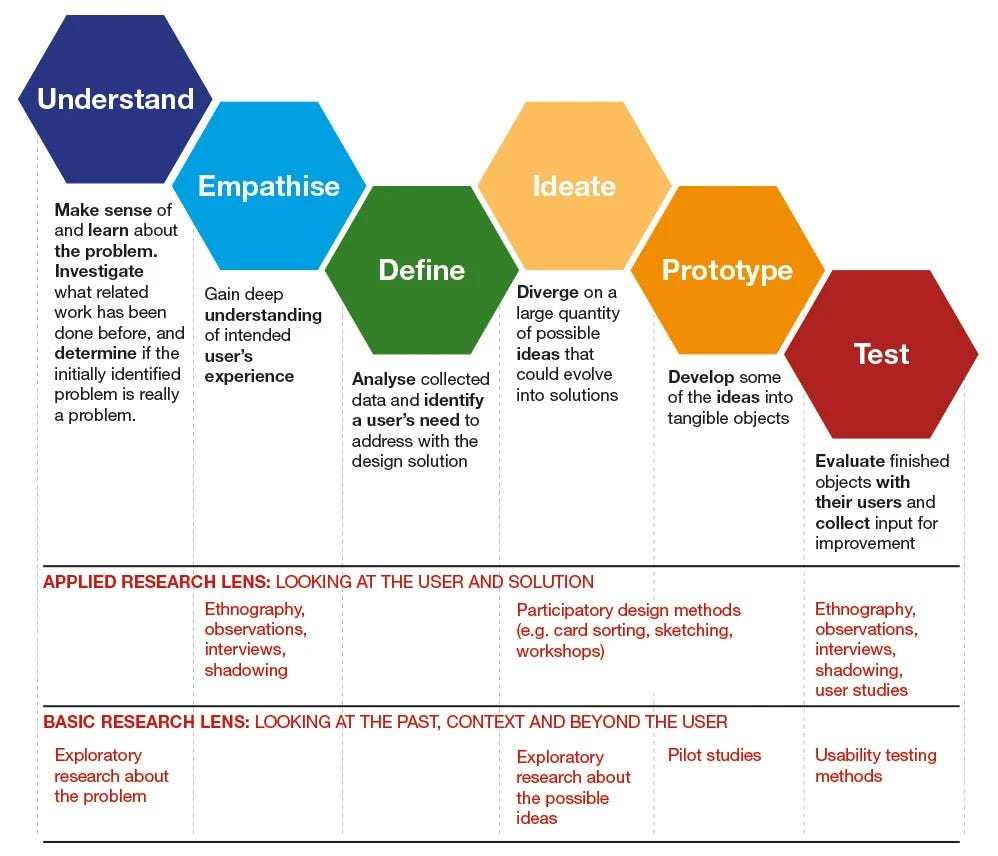Building the right products with design thinking?
how a kgpian is helping startups build the right product.
Get this, we’re in 2024 and the number one reason for the failure of startups is STILL building products and services that the market doesn’t need. A lot of time is still spent on solving problems that don't matter to your ideal customers, even if you think they should care about them. Unless you have been in the problem space that you’re building in for a tonne of years and understand it deeply, chances are you’ve been told to follow the lean startup process:
We’ve got different frameworks that prove to be valuable across the product building journey, then why are there so many startups that get stuck in the pivot loop, having to close shop before being able to scale and grow?
“Many entrepreneurs who claim to embrace the lean start-up canon actually adopt only part of it.”
Tom Eisenmann [Professor of Business Administration at Harvard Business School]
Most first time entrepreneurs start with an observation and quickly start from an idea in their head. It makes sense, it would work flawlessly based on the scenario playing in the head, then why doesn’t this exist already? It’s probably worth building something, right? So they start with the idea and either start building it, or do customer discovery for the “idea”.
When you already have an idea in mind and the back wheels of your mind are spinning on features, interactions, pricing. This is what “discovery” looks like:
After spending resources to get the feedback and validate the product, it turns out that the users didn’t do what they said they would do or really didn’t mean it when they said “ Yeah, that would be helpful”. Thus begins the endless loop of the Pivot cycles.
So how do you avoid this pain cave of building something that no one wants? It’s when you can start with the “problem” discovery and not discovering if the market wants the solution you’ve built.
So how do we get to this starting point, how do we learn about the problem deeply before jumping into ideas of what the solution could be? That’s where design thinking can play a big role. To reduce market risk, so that when you do end up building an offering, there is low risk of adoption.
While the standard Design thinking process consists of : Empathize -> Define -> Ideate ->Prototype->Test. It can often look like understanding the problem deeply with laying out what kind of stakeholders are involved to make the venture a success and understanding their journeys thoroughly to identify opportunities, motivations.
All of this could seem like a lot of research and not actually doing what you set out to do. Afterall, Entrepreneurs should have a strong bias for action, right? Unfortunately, more often than not, this bias for action is towards building the thing, than for knowing if there is even a need for the thing.
This phase of ‘research’ doesn’t have to be static like an academic report, it could truly be seen as a cycle of pre-sales. The key focus of using Design thinking to reduce early market risk, in the prototype phase, is to not just make a “Minimum Viable Product”, but to create a “Minimum Viable Offering”. What would your customer need in order for them to pay you ? Sometimes the answer could be something where you don’t need to write a single line of code, it could be a Slide Deck, a Landing Page, UI Prototype or even a payment plan for a service based engagement that would onboard to your product a few months down the line etc.
All the ‘Research’ methods mentioned above and to gain evidence of understanding, not only what users care about, but also what customers are willing to pay for. You can test out a problem statement by doing outreach and measuring the response rate to understand how big of an issue it is. People willing to share their time to share about their problem with the hopes that you would solve that for them is also a strong signal of understanding the need for what you’re hoping to create. The solution to the problem might change over time based on many factors and you can pivot as many times as you want, but when you are solving a deep seeded problem, you know your customers will want to give you all that they can offer to help you succeed.
It’s time we as engineers think about solving the right problems, and not just building the right products.
And as you know, we want kgpians to lead.
Akhila Kosaraju is the co-founder of What if Design, a digital design studio for digital products and services that focuses on sustainable design. Their team has diverse experience from leading prestigious UX design projects for the Ministry of Health of Saudi Arabia to working with Accel Partners, and unicorn startups like TATA 1mg and Pristyn Care for creative direction.





